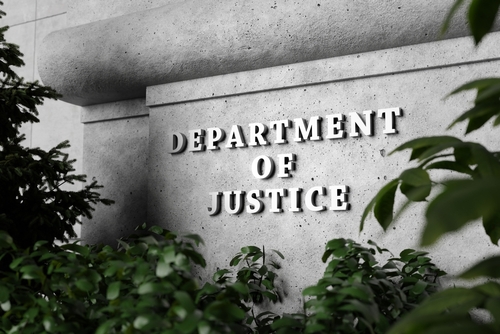The Department of Justice is preparing for a Supreme Court showdown that could redefine the structure of federal agencies. It plans to urge the Court to reconsider a longstanding precedent that has shielded independent agency officers for nearly 80 years.
The DOJ’s Move Against Humphrey’s Executor
The U.S. Department of Justice intends to ask the Supreme Court to overturn the 1935 Humphrey’s Executor ruling. This ruling has historically protected the independence of federal agencies like the National Labor Relations Board and the Federal Trade Commission by imposing tenure protections. However, the DOJ argues these protections limit presidential authority, infringing on constitutional principles.
Two weeks ago, I told my radio audience that they were about to hear a great deal about Humphrey’s Executor. Yesterday, the acting Solicitor General notified Congress of the Department of Justice’s intent to ask the Supreme Court to overturn Humphrey’s Executor. Here’s why that… pic.twitter.com/N7blOkNzVd
— Erick Erickson (@EWErickson) February 14, 2025
The Trump administration had previously expressed interest in consolidating executive power, challenging legal precedents that limit presidential reach. The DOJ’s move echoes past Supreme Court decisions, such as the 2010 verdict on the Public Company Accounting Oversight Board suggesting a potential reshaping of federal government powers.
Impact on Federal Agencies
The DOJ’s action targets statutory tenure protections affecting members of key federal agencies, including the Federal Trade Commission, National Labor Relations Board, and Consumer Product Safety Commission. Acting Solicitor General Sarah Harris communicated this intent in a letter to Senate Judiciary Committee ranking member Dick Durbin.
ICYMI
Yesterday the SCOTUS was asked by the Trump administration to overrule
Humphrey's Executor v. United States
This instantly takes the authority of FHFA away and puts back in place it predecessor OFHEO
(Without 4617b2jii and 4617f self-dealing and prevent courts) pic.twitter.com/mW2hBUapDu— Ano (@Ano3020100) February 13, 2025
The DOJ will no longer defend statutes protecting the tenure of officers in these agencies, viewing such protections as unconstitutional. These agency protections, rooted in Humphrey’s Executor, potentially violate the Constitution by restricting presidential powers.
Legal and Legislative Backdrop
Humphrey’s Executor has been a cornerstone in the legal autonomy of federal agencies, cementing their independence despite executive changes. Multiple pending cases in lower courts link to this issue, beginning with early executive actions by Trump. While the DOJ pushes to dismiss this ruling, it will require a thorough Supreme Court review.
The challenge’s timing and manner remain undecided, as the letter from Harris does not specify these details. Previous precedents, such as the 1926 Supreme Court decision, affirmed that the president possesses unrestricted power to remove executive officers, yet later, Congress set removal restrictions.
This legal shift has not provoked comments from agencies like the NLRB, FTC, and Consumer Product Safety Commission. However, the implications could redefine the balance of power, shifting more control into the executive’s hands. Meanwhile, the debate continues as stakeholders await the Supreme Court’s reaction to these profound constitutional queries.
Sources:
https://www.theepochtimes.com/us/doj-to-ask-supreme-court-to-overturn-80-year-precedent-5809529




